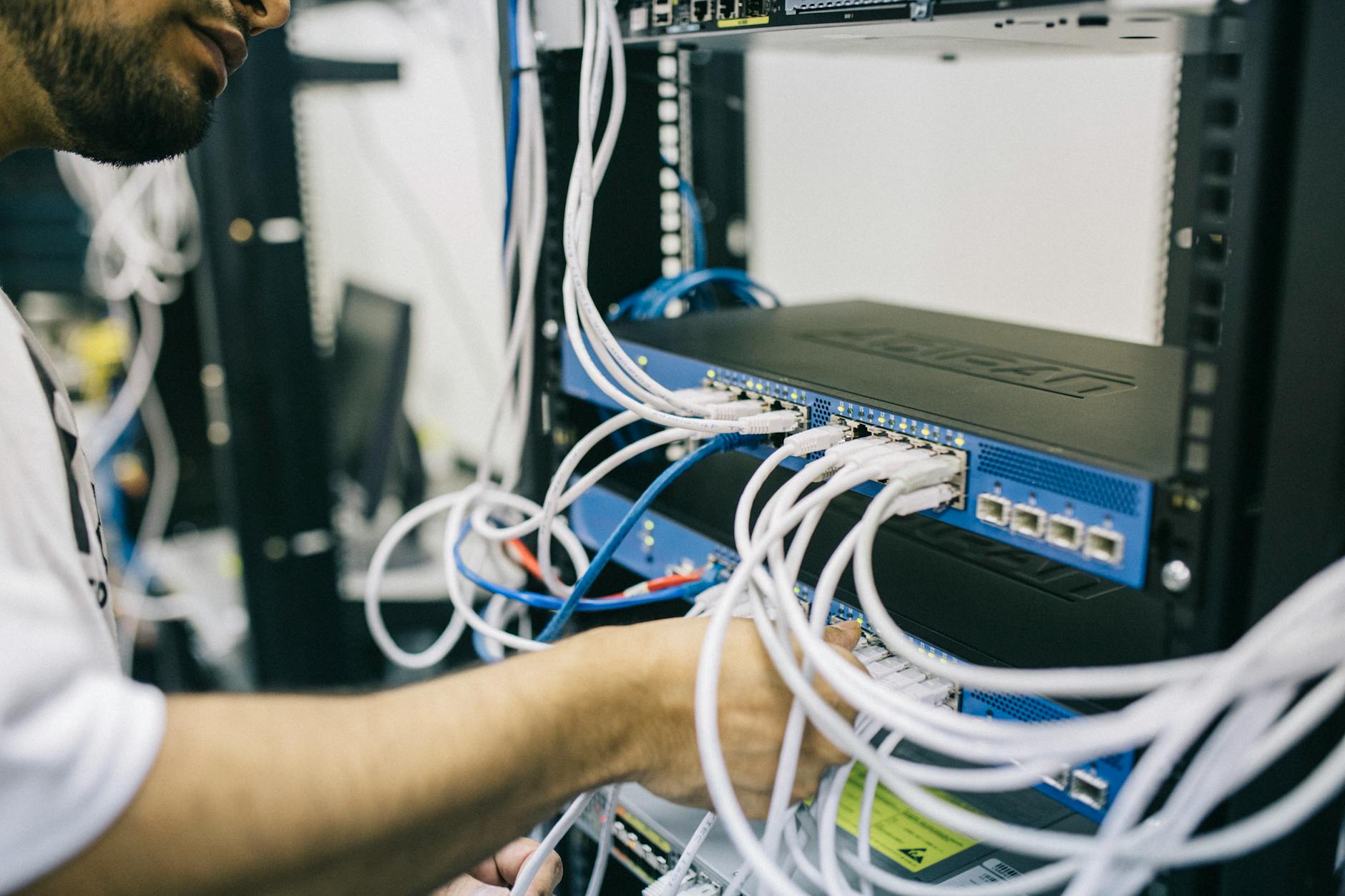Controller on-premises deployment in Cisco SDWAN
Controller on-premises deployment in Cisco SDWAN

Are you tired of managing complex network infrastructures? Cisco SDWAN offers a revolutionary solution, but the key to unlocking its full potential lies in the proper deployment of its controllers. While cloud-based options are popular, many organizations prefer the security and control of on-premises deployment. 🏢💻
Deploying SDWAN controllers on-premises can seem daunting, but it doesn’t have to be. With the right knowledge and approach, you can harness the power of Cisco SDWAN to transform your network architecture. From understanding the fundamentals to optimizing performance, this guide will walk you through every crucial step of the process.
Ready to take control of your network? Let’s dive into the world of Cisco SDWAN controllers, exploring their on-premises deployment from preparation to maintenance. We’ll cover everything you need to know about understanding these controllers, preparing for deployment, the step-by-step process, performance optimization, and ongoing management. 🚀🔧
Understanding Cisco SDWAN Controllers
Key components of Cisco SDWAN architecture
Cisco SDWAN architecture comprises several key components that work together to create a robust and flexible network infrastructure:
- vManage: The centralized network management system
- vSmart: The control plane and policy engine
- vBond: The orchestrator for initial bring-up and authentication
- vEdge routers: The data plane devices at branch locations
| Component | Primary Function |
|---|---|
| vManage | Network management and monitoring |
| vSmart | Routing and policy decisions |
| vBond | Initial authentication and orchestration |
| vEdge | Data forwarding and security |
Role of controllers in SDWAN networks
Controllers play a crucial role in Cisco SDWAN networks:
- Centralized management: vManage provides a single pane of glass for configuration and monitoring
- Policy enforcement: vSmart controllers distribute policies and make routing decisions
- Secure connectivity: vBond orchestrators facilitate secure connections between network devices
- Scalability: Controllers enable easy scaling of the network as new branches are added
Benefits of on-premises deployment
On-premises deployment of Cisco SDWAN controllers offers several advantages:
- Enhanced security and data sovereignty
- Greater control over network infrastructure
- Customization options for specific organizational needs
- Potential cost savings for large-scale deployments
- Compliance with regulatory requirements
By deploying controllers on-premises, organizations can maintain tighter control over their SDWAN infrastructure while still benefiting from the flexibility and scalability of software-defined networking.
Preparing for On-Premises Controller Deployment

Hardware requirements
When preparing for on-premises controller deployment in Cisco SDWAN, selecting the right hardware is crucial. Here’s a breakdown of the essential hardware requirements:
- Processor: Minimum quad-core CPU, 2.4 GHz or higher
- Memory: At least 32 GB RAM
- Storage: 200 GB SSD or higher
- Network interfaces: Dual 1 Gbps Ethernet ports
| Component | Minimum Requirement | Recommended |
|---|---|---|
| CPU | Quad-core, 2.4 GHz | Octa-core, 3.0 GHz |
| RAM | 32 GB | 64 GB |
| Storage | 200 GB SSD | 500 GB SSD |
| NICs | Dual 1 Gbps | Dual 10 Gbps |
Software prerequisites
Before deploying Cisco SDWAN controllers on-premises, ensure you have:
- Cisco SDWAN software image (compatible version)
- Hypervisor software (VMware vSphere or KVM)
- Management workstation with SSH client
Network considerations
To ensure smooth operation of your SDWAN controllers, address these network aspects:
- Dedicated management VLAN
- Internet connectivity for cloud services
- Firewall rules for controller communication
- DNS and NTP server accessibility
Security implications
Implementing proper security measures is vital for on-premises controller deployment:
- Physical security for server hardware
- Network segmentation and access control lists
- Encryption for data in transit and at rest
- Regular security patches and updates
By carefully addressing these hardware, software, network, and security considerations, you’ll be well-prepared for a successful on-premises deployment of Cisco SDWAN controllers. Next, we’ll dive into the step-by-step deployment process to bring your SDWAN infrastructure to life.
Step-by-Step Deployment Process

A. Installing the controller software
The first step in deploying Cisco SDWAN controllers on-premises is installing the controller software. This process typically involves downloading the software package from Cisco’s official website and following their installation guide. Here’s a simplified overview of the installation steps:
- Download the controller software
- Verify software integrity using checksums
- Prepare the server or virtual machine
- Mount the installation media
- Run the installation wizard
| Installation Method | Pros | Cons |
|---|---|---|
| Physical Server | Higher performance | Hardware maintenance |
| Virtual Machine | Flexibility, easier scaling | Potential resource contention |
B. Initial configuration setup
Once the software is installed, you’ll need to perform the initial configuration setup. This involves:
- Setting up admin credentials
- Configuring network settings (IP address, subnet mask, gateway)
- Defining time zone and NTP servers
- Configuring basic security settings
C. Integrating with existing network infrastructure
Next, you’ll need to integrate the controller with your existing network infrastructure. This may include:
- Configuring routing protocols (BGP, OSPF)
- Setting up VLANs
- Configuring firewalls and access control lists
D. Verifying connectivity and functionality
After integration, it’s crucial to verify the controller’s connectivity and functionality:
- Test network connectivity
- Verify controller-to-controller communication
- Check controller-to-vEdge device communication
- Validate policy enforcement
E. Troubleshooting common issues
Finally, be prepared to troubleshoot common issues that may arise during deployment:
- Network connectivity problems
- Certificate issues
- Configuration mismatches
- Software compatibility conflicts
Remember to consult Cisco’s documentation and support resources for detailed troubleshooting steps. Now that we’ve covered the deployment process, let’s explore how to optimize controller performance for optimal SDWAN operation.
Optimizing Controller Performance

Best practices for configuration
When optimizing Cisco SDWAN controller performance, adhering to best practices is crucial. Here are key configuration recommendations:
- Resource allocation:
- Allocate sufficient CPU, memory, and storage
- Monitor resource utilization regularly
- Network segmentation:
- Implement VLANs for traffic isolation
- Use separate management interfaces
- Security measures:
- Enable strong authentication mechanisms
- Implement access control lists (ACLs)
- Keep software and firmware up-to-date
| Configuration Area | Best Practice |
|---|---|
| Resource Management | Allocate resources based on network size |
| Network Design | Implement proper segmentation and isolation |
| Security | Enable strong authentication and access controls |
| Monitoring | Set up proactive monitoring and alerting |
Scaling considerations
As your SDWAN network grows, scaling becomes a critical factor. Consider the following:
- Controller capacity: Assess the maximum number of devices each controller can manage
- Geographic distribution: Deploy controllers in strategic locations to reduce latency
- Load balancing: Implement load balancing among multiple controllers for even distribution
High availability setup
Ensuring high availability is essential for maintaining network stability. Implement the following:
- Controller redundancy:
- Deploy controllers in pairs (active/standby)
- Configure automatic failover mechanisms
- Data replication:
- Set up real-time data synchronization between controllers
- Implement regular backups of controller configurations
- Disaster recovery:
- Develop and test disaster recovery plans
- Consider geo-redundant deployments for critical networks
By focusing on these optimization strategies, you can significantly enhance the performance and reliability of your Cisco SDWAN controller deployment. Next, we’ll explore the crucial aspects of ongoing management and maintenance to ensure long-term success of your SDWAN infrastructure.
Management and Maintenance

Monitoring controller health
Maintaining the health of your Cisco SDWAN controllers is crucial for the overall performance of your network. Regular monitoring helps identify potential issues before they escalate. Here are key aspects to focus on:
- CPU and memory utilization
- Disk space usage
- Network connectivity
- Application processes
Implement automated monitoring tools to track these metrics and set up alerts for any abnormalities. A comprehensive monitoring strategy should include:
| Metric | Normal Range | Alert Threshold |
|---|---|---|
| CPU Usage | 0-70% | >80% |
| Memory Usage | 0-80% | >90% |
| Disk Space | 0-75% | >85% |
| Network Latency | <50ms | >100ms |
Performing software updates
Keeping your Cisco SDWAN controllers up-to-date is essential for security and functionality. Follow these best practices:
- Schedule updates during maintenance windows
- Test updates in a non-production environment first
- Back up configurations before updating
- Follow Cisco’s recommended update path
- Monitor system performance post-update
Backup and recovery procedures
Implement a robust backup strategy to ensure business continuity:
- Perform regular backups of controller configurations
- Store backups in multiple locations (on-site and off-site)
- Test recovery procedures periodically
- Document the backup and recovery process
Capacity planning
As your network grows, so do the demands on your controllers. Effective capacity planning involves:
- Monitoring current resource utilization
- Forecasting future growth
- Identifying potential bottlenecks
- Planning for hardware upgrades or additional controllers
Regularly review your capacity plans to ensure your SDWAN infrastructure can support your organization’s evolving needs.

The deployment of Cisco SDWAN controllers on-premises is a critical step in establishing a robust and efficient software-defined wide area network. By following the outlined steps, from understanding the controller’s role to optimizing its performance, organizations can successfully implement this powerful solution. Proper preparation, careful execution of the deployment process, and ongoing management are key to harnessing the full potential of Cisco SDWAN.
As businesses continue to evolve and embrace digital transformation, the importance of a well-configured SDWAN cannot be overstated. By taking control of their network infrastructure through on-premises deployment, companies can enjoy enhanced security, improved performance, and greater flexibility. Remember, the journey doesn’t end with deployment – continuous monitoring, maintenance, and optimization are essential to ensure your Cisco SDWAN controllers continue to meet your organization’s evolving needs.











